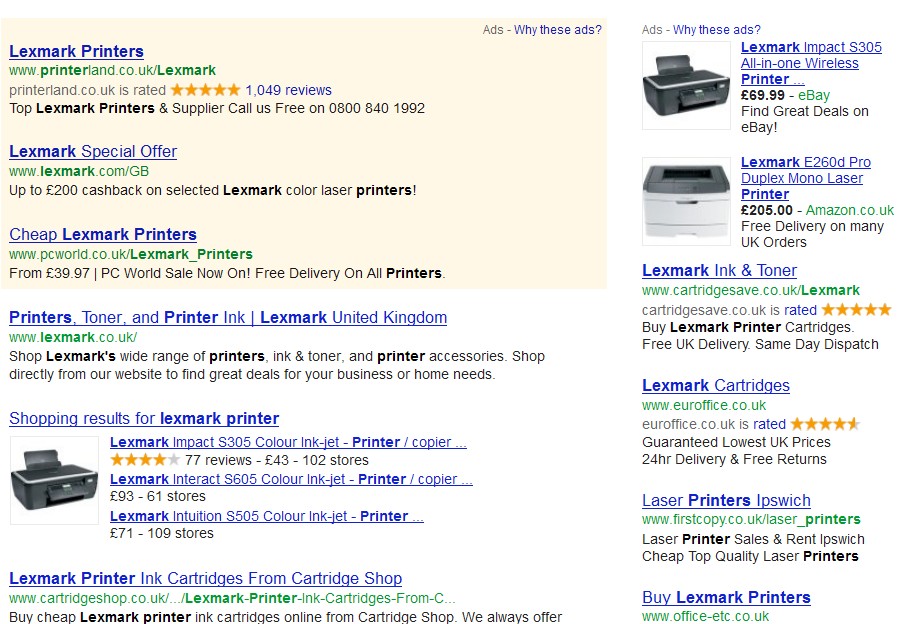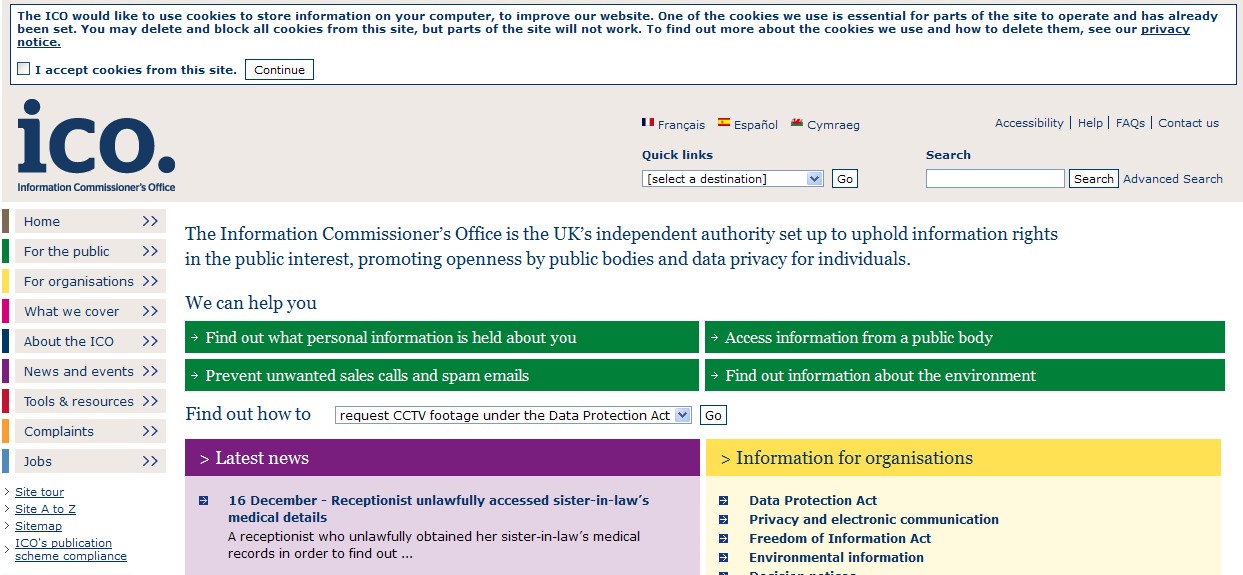I’ve been reading all of these recent 2012 predictions and I’ve been inspired to have a go myself. One month in to the New Year, I think 2012 is shaping up to look like one of the most interesting years in online marketing for some time.
I’ve split my predictions in to:
• the good – things I’m most looking forward to this year
• the bad – things I’ve read as predictions and don’t agree with
• the ugly – self explanatory!
The Good…
Conversion rates on the up.
According to Econsultancy (and Richard’s post a fortnight ago), for every £92 businesses spend driving traffic to their websites, they only spend £1 converting it. This was one of my favourite stats of 2011. Don’t be part of that stat this year! If you’re not looking at conversion rate optimisation already, then now is the time to get involved.
During 2012, and these dire financial times, it’s likely that we’re going to see marketing budgets taking a hit, meaning marketers are going to need to make every penny they spend accountable and for that penny to work as hard as physically possible.
Making your website more appealing and more usable for your target audience is going to be vital over the coming year. Before you think it, I’m not just talking about colours of buttons; I’m talking about testing page layouts, imagery but more importantly content and messaging. These things can all have huge implications for the success of your site, so getting it right is vital.
Social media on everyone’s marketing plan.
This year social media is going to play a bigger part in all our lives especially those of us in marketing. Social is appearing on more and more marketing plans without prompt, and if you’re not already using social as a marketing channel, it’s likely you’ll be thinking about it.
In 2011, the big news from social was Google+. Google actually managed to create a social platform with some legs. Will it last? I don’t know. It’s not going to replace Facebook and their 800 million active users, that’s for sure, but it has enough users to keep it going. I predict we’ll see Google+ adding features at a pace this year, to help it take market share from the other platforms.
We also saw new platforms raising eyebrows towards the end of the year, more notably Pinterest. It’s a very nice concept, but do we really have the need (or the time) for another social platform? 2012 will make or break Pinterest.
One of the other big things for me in 2012 is that boundaries of home and work lives will blend, mainly thanks to the likes of Twitter and LinkedIn. What does this mean for marketing? Well, for B2B marketing in particular it means that you’re not just going to be engaging with your prospects from 9-5… If you’re customers are being social 24 hours a day, are you missing a trick by not being there?
I realise this could be quite a daunting thought, but there are a good number of social monitoring tools out there that can help you understand where your target market are and when they’re most active. If you use Google Chrome, you can try the free version of SocialBro for example. This will help build a picture of when your customers are being social and when they’re most likely to interact with you. This is turn will help you to more effectively manage your social channels and ensure you get the most from them.
Social and search becoming one.
This is something I’ve been monitoring for a while now and the recent news from Google comes as no surprise.
“Search plus your world” is the first big feature for Google in 2012, and shows just how exciting the world of search is going to become this year. The new tools allow users with Google+ accounts to search through personalised recommendations from their friends, including Google+ posts and images uploaded to Picasa. You’ll also be able to use Google to search for people you know and Google will use what it knows about your relationships to help make the results more relevant to you. (i.e. return the John Smith you actually know rather than the beer.)
You can’t help but wonder whether SEO will exist for much longer on its own. Social signals are becoming so important now that SEO without social is like strawberries without cream. (Can you tell I’m looking forward to summer already?)
The Bad…
This is my pick of things I’ve heard people say or that I’ve read around the net for 2012, that I disagree with… and my reasons why.
Email Marketing
Bad Prediction: “Email Marketing is dead.”
I’ve seen this come around a couple of times recently and it amazes me that people say that. If you can’t tell already, I think those people are wrong. Email is changing, or rather the way we use it is, and it’s far from dead.
According to www.about.com, almost 300 billion emails are sent every day, so it’s understandable that people think standing out is difficult. As marketers we do need to be smarter with the way we use email. Here are my top 3 tips for this year:
• We will need to start using email as less of a first contact tool, and more of a nurturing tool.
• Automation strategies need to be planned and implemented. How are you going to use email as part of your content marketing strategies? How does this tie in with what users will see on your other channels?
• We also need much more focus on clean data, and segmentation. Blasts to your entire list without personalised content should become a thing of the past as quickly as possible.
Mobile
Bad Prediction: “2012 is year of the mobile”
Not again…please… I’ve heard that too many times now. I think this might be the 4th year of the mobile in a row.
Mobile usage has seen phenomenal growth over the last few years and I’m certain this year will be no exception (actually smart phone penetration in the UK is set to double!).
The decision to make a leap into a mobile presence needs to be made for a logical reason and not because everyone else is doing it. Use web analytics; look at the data on visitors and conversion rates on mobile devices. If the potential loss of conversion from mobile conversion rates is enough to cover the cost of getting a mobile site, or app developed, then go for it. If it isn’t then hold out a little bit longer.
If you’re keen to test the waters but still don’t have much mobile traffic (or more importantly any budget), why not develop a landing page with key information for mobile users? It could contain things like contact info, key services and links to social platforms. This will help keep costs down, but allow you to have a decent, temporary mobile presence. Temporary is the important word there though, don’t get too comfy if you take this option. The mobile market is demanding more and more of brands and their websites.
Natural Search
Bad Prediction: “It’s all about getting the top spot”
I imagine we’re going to see less and less natural search traffic coming through this year. According to SEOmoz, 80% of search clicks are still on natural results, but that percentage is decreasing. This is not surprising considering how aggressive Google are being with the promotion of their paid ads.
I’ve seen examples, like this one here, where only one (and a half) natural result appears above the fold.

Shocking really considering these are (algorithmically anyway) the best quality results for the users. So between increasing paid search real estate, and even more real estate being taken by other Google products and services, what is being in the top spot actually going to be worth?
What do you need to do to combat this? Utilise different areas of free traffic you can get hold of and maximise the potential real estate available to you. If applicable:
• Get a product feed
• Get locations for all of your offices/shops registered with Google places
• Optimise your images (alt tags, sensible filenames and the like)
• Effectively manage your site links for brand searches (using webmaster tools) to ensure that you make the most of your brand search results
The Ugly…
The ICO have made my ugly list this year for the new cookie laws coming into play. First initiated in May 2011, they will start being enforced from May 2012. Why ugly?
Firstly, for me the whole thing feels like it’s been put together by people who really don’t understand the concerns of the public, or the implications of what they’ve put forward on the web. I’ve blogged about it a few times.
One of the things that annoys me most about the ‘opt in’ for cookies approach to the web is this:
Sometimes the way companies use remarketing is really clever, and relevant to me, and I’d like that to continue. Some companies use it aggressively and intrusively. I’d rather that didn’t continue. The problem is, I don’t know at the suggested ‘time of consent’ whether this company is going to be good or bad at remarketing to me, so don’t really know if I want to let them use cookies.
Secondly, look at the way they’ve implemented their solution for asking for consent? If that’s not ugly I don’t know what is….

And finally (and more seriously), because the guidance is still not definitive enough to be of any real use. There’s still far too much “think about this” and “sliding scale that”. Call me cynical, but getting this wrong could result in me getting fined significant amounts of money. I’d rather have something more concrete and no longer have to second guess “for cookies that collect no user specific data, do this,” “for cookies that collect anonymous statistics on user behaviour, do this,” and so on.
I’m still hoping that one day soon I wake up and Firefox, IE, Chrome and the rest of the gang are going to have formed a partnership and implemented a cross browser solution for accepting or rejecting cookies on a site by site, cookie by cookie basis. This is the nirvana for me. A consistent approach for every site will be much easier for users to stomach at least.
I fear that it will end up with users getting so fed up with being asked whether they want to accept cookies, they’ll just be click yes anyway, defeating the point of the whole operation.
and Finally…
As you can see, 2012 is shaping up to be an exciting year to be a marketer. New regulations from our buddies in the EU may be a pain, but it’s not going to stop the industry from pushing the boundaries of marketing. It’s going to mean staying on our toes more than ever and being ready to adapt strategies and messaging to meet the demands of a rapidly changing marketplace.
What are the things you’re most looking forward to this year? How will you adapt to the evolving marketing arena? Why not leave me a comment below!
